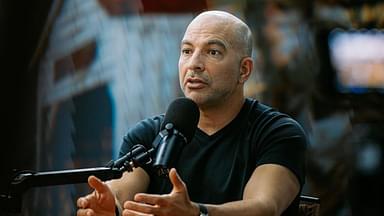Age often brings with it certain setbacks and disadvantages that one just needs to roll with. One of these happens to be a visible loss in muscle mass, especially during the mid-70s. Dr. Peter Attia discussed this situation in a recent video and mulled over whether it was a voluntary occurrence or not.
One might witness the graphical representation of the gradual decrease of muscle mass in older individuals as a smooth downward curve. This often gives rise to the perception that the phenomenon is purely physiological since it records the population along with it.
However, when Attia discussed this with fellow scientists, he realized it followed a more gradual downward step pattern. The difference between the two graphs exhibiting different patterns is the number of people taken into account. When looking at the occurrence in different individuals, one might witness a change in pattern.
So, what does a gradual downward step graph represent in terms of old age and a loss in muscle mass? Dr. Attia believed that the drops in the graph showed extended periods of inactivity – which led to a decrease in the size of the physical structure.
“What it really comes down to the individual level is a series of discreet periods of inactivity, that result in sudden…meaning over a period of months or weeks, big drops in muscle mass that are never recovered.”
Furthermore, the doctor revealed how being in his 50s had gradually made him aware of this phenomenon, which ultimately made him more alert. Speaking of how he had been devising strategies to avoid losing his muscles and overall structure, he concluded:
“Again, it really comes down to how down to how do you not get injured, and even if you don’t have an injury, how do you make sure you’re staying active.”
Navigating through this could be tricky because the chances of getting injuries, especially during old age, increase massively. The trick, it seems, was to get stronger as one aged to avoid the loss of mind-body coordination and balance.
Dr. Peter Attia once highlighted the importance of strength training in old age
The onset of one’s senior years might ultimately lead them to being inactive, uncoordinated, and physically weak. All of these are an unfortunate result of losing muscle strength with age, which Dr. Attia believed should be one of the primary focuses.
In a detailed conversation with Dr. Stuart McGill, Attia talked about the importance of strength training and increasing agility in seniors. Citing examples of how this form of workout plan was used to increase mobility in athletes, both professionals concluded that it could be beneficial in several ways. Dr. Attia felt that strength training could work exceptionally well for older people who need to reinforce their muscles and bones for proper movement.





